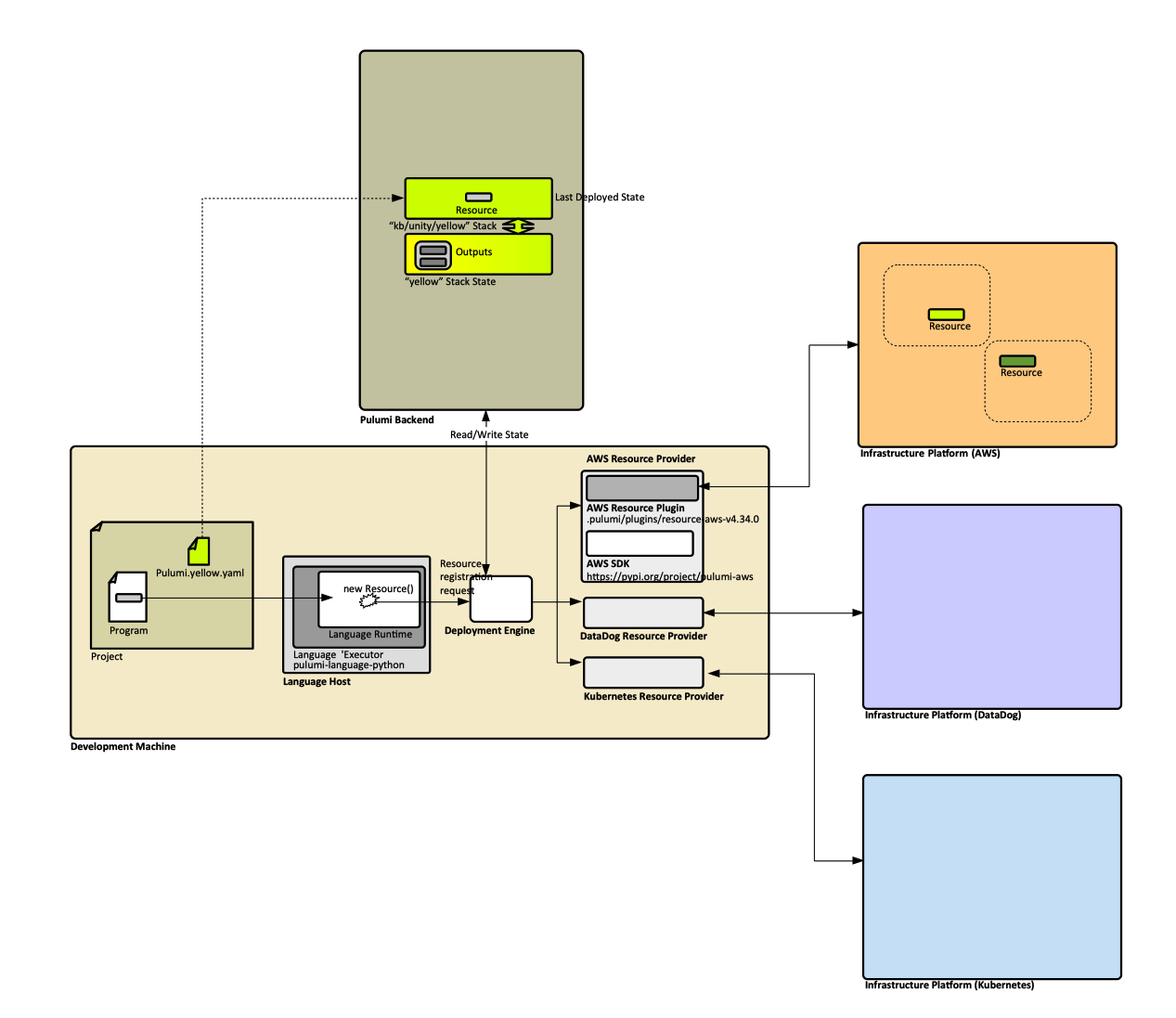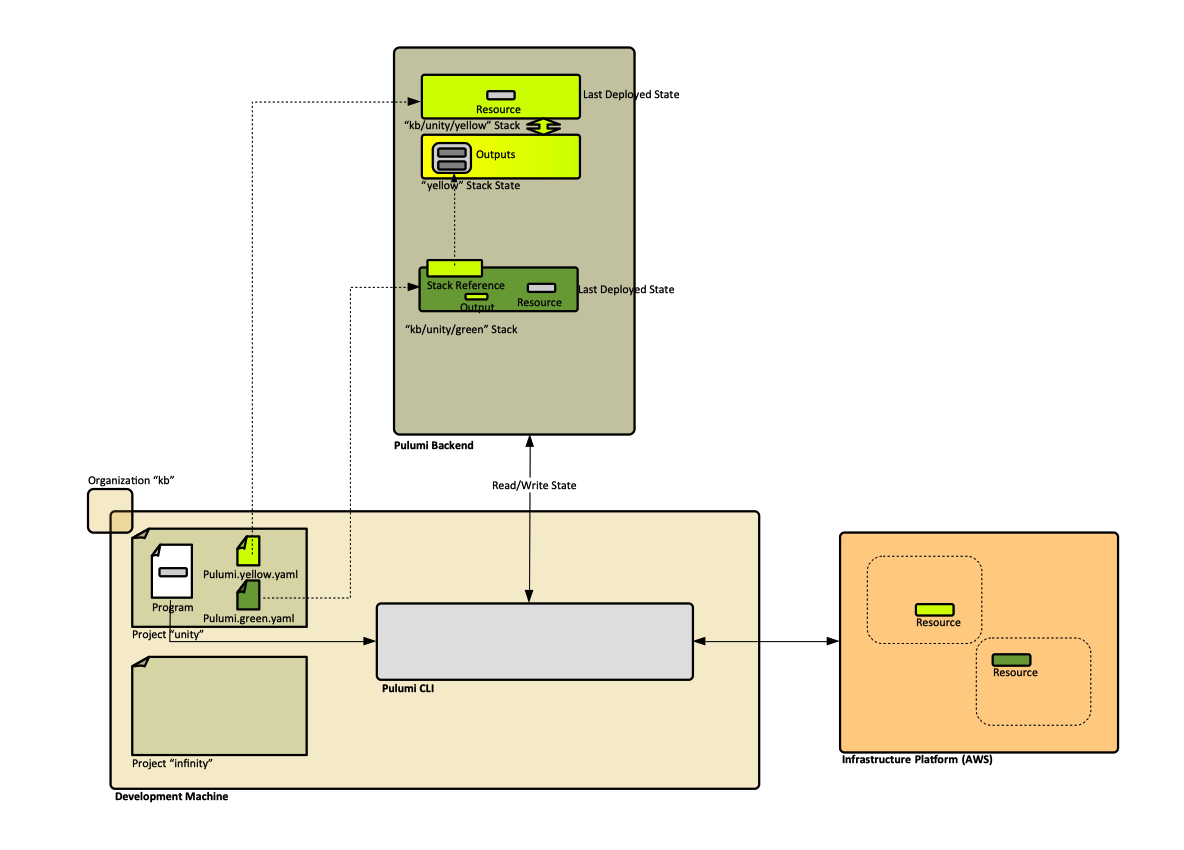Pulumi Architecture: Difference between revisions
Jump to navigation
Jump to search
(→SDK) |
(→SDK) |
||
| Line 12: | Line 12: | ||
===SDK=== | ===SDK=== | ||
Published as a [[Pulumi_Concepts#Packages|package]] <font color=darkkhaki>available from [[Pulumi_Concepts#Pulumi_Registry|Pulumi registry]] and/or (?) from the language specify registry like [[ | Published as a [[Pulumi_Concepts#Packages|package]] <font color=darkkhaki>available from [[Pulumi_Concepts#Pulumi_Registry|Pulumi registry]] and/or (?) from the language specify registry like [[Python_Language_Modularization#PyPI|PyPI]]</font>. | ||
=State Management= | =State Management= | ||
Revision as of 18:40, 14 January 2022
External
Internal
Overview
Architecture
Resource Provider
A resource provider consists of a resource plugin and an SDK. Example of resource providers: AWS resource provider, Datadog resource provider.
Resource Plugin
SDK
Published as a package available from Pulumi registry and/or (?) from the language specify registry like PyPI.
State Management
TO PROCESS: https://www.pulumi.com/docs/intro/concepts/state/
State can be interacted with via both CLI and programming model.
What Happens when Code is Applied to Platform?
The pulumi up command evaluates the program and determines resource updates to make. Part of the update process, pulumi will run the preview step of the update, which computes the minimally disruptive change to achieve the desired state described by the program.
- Where is the code executed?
- Where does stdout/stderr go?
- Reconcile with Deploying a Project

